Automatic Activation Devices: How much do you really know about what you're putting on your back?
As the sport of skydiving continuously evolves, equipment manufacturers are constantly required to redesign and upgrade their products to meet the ever-increasing demands put on the gear. And in doing so, there are changes in the way the equipment functions.
Some of these changes are subtle and go unnoticed by the user, but others require the user to make changes in the way they operate the equipment. We are at the point of equipment evolution where most changes made are subtle, with many improvements being driven by comfort or even fashion. A culture has arisen amongst skydivers that if it looks similar, then it must work the same as the other products. In a lot of cases, this is true. But in other cases, treating one product like another without knowing the full operating parameters puts the user at great risk. In recent years it has become evident that, even in an age of instant access to information, we are not stopping to take the time to learn about the equipment we put on our backs. We take the word of those who have a little information and apply it to all equipment.
But who is responsible for the equipment you use? That's simple. You are.
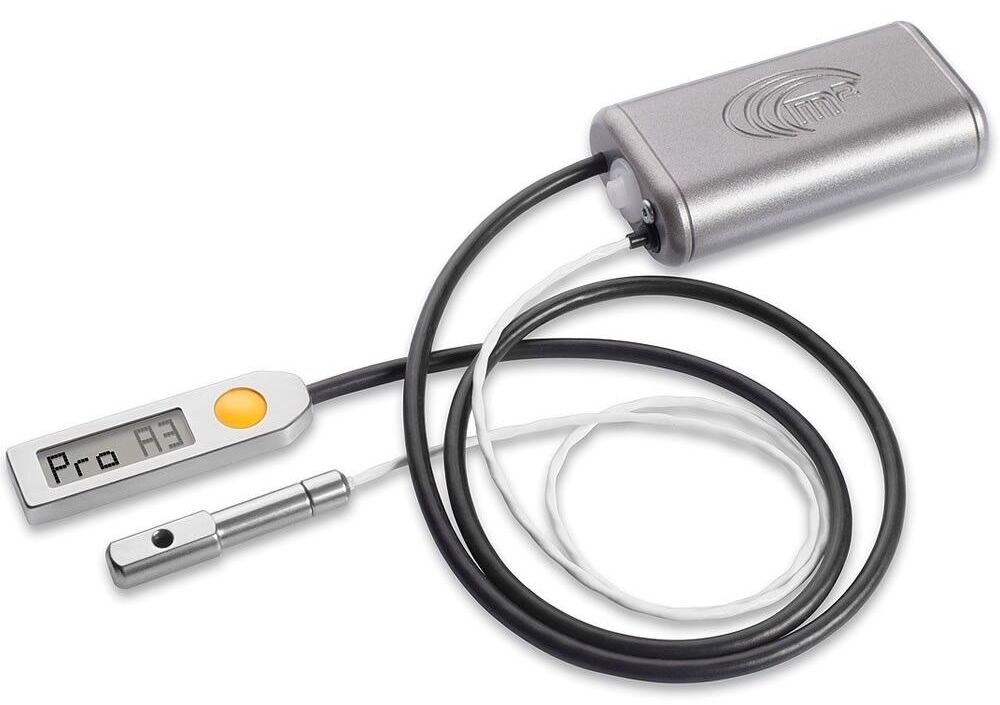
Every manufacturer has instructions for the safe operation of their piece of equipment. This information is provided with the equipment when it is purchased. If you have equipment without the manufacturer's instructions, then you can visit that manufacturer's website and gain access to as much information as you desire. Technology has given you this instant access. There is no excuse or no-one else to blame if you have not read the instructions that pertain to your particular set of equipment.
In recent years, as we have learned to go faster in freefall and under canopy, we have found that we can actually cause some of our equipment to put ourselves at risk. In particular the use of Automatic Activation Devices (AAD). Because the AAD is pretty much hidden away, except for the LCD controller, we have the attitude of set and forget. That is a lot of faith to put in these devices. I am not saying that our AADs don't deserve our trust. What I am saying is that it is a lot of trust to put in a device that most of us know very little about, because we have never seen the instruction manual, let alone read it! When we learn to skydive, we are given the basic overview of the equipment and how to operate it, which should include how to turn our AAD on and off. In many cases however, this is the only instruction some receive on the operation of their AAD!
Each AAD on the market today has its own operating parameters. No two AAD manufacturers have exactly the same operating parameters. Do you know what height your AAD activates? Do you know about or understand the depression zone adjustment built into your AAD and how it is affected by your body position, belly to earth or back to earth? At what speed will your AAD activate? ALL of these questions can be answered easily by reading and understanding your AADs instruction manual.
The three most common AADs in use today are the Airtec 'CYPRES', Advanced Aerospace Designs 'Vigil' and MARS M2. All of these products look similar. They fit into your equipment in the same way. We turn the units on with a very similar process. BUT they do not operate in exactly the same way. The technology on how each of these devices fully function is best explained by their respective manufacturers, but the things we NEED to know are here for us to see in each of their operating manuals.
Some of the important questions we need to ask about our AAD are:
What height will it activate?
What speed will cause it to activate?
How does the decompression zone affect activation height?
What height does the AAD become active in flight (on the climb to altitude)?
What is the life span and battery life of the AAD?
When do I need to get my AAD serviced?
We have seen in the recent past that not knowing the parameters of our AADs has caused unnecessary injury and even death. It is easy to blame a device as a knee jerk reaction to a fellow skydiver being injured or killed when we hear that their AAD activated at an unexpected time. In most cases, after examining the facts we find that the AAD has operated as designed within its operating parameters.
All unexpected AAD activations are due to user error.
Here are the links to each manufacturer's website and user manuals:
CYPRES
VIGIL
M2
Activation Speeds and Heights
The activation speed of your AAD is lower than your average freefall speed. There is a misconception that freefall speed must be reached before an AAD activation will happen. The most common activation is the 'low pull and two canopies out' situation. This often occurs as a result of a skydiver activating their main canopy at an altitude below normal opening height, and during the opening sequence of their main canopy, the AAD's activation parameters are met. The manufacturers have designed their AADs to activate at a minimum altitude:
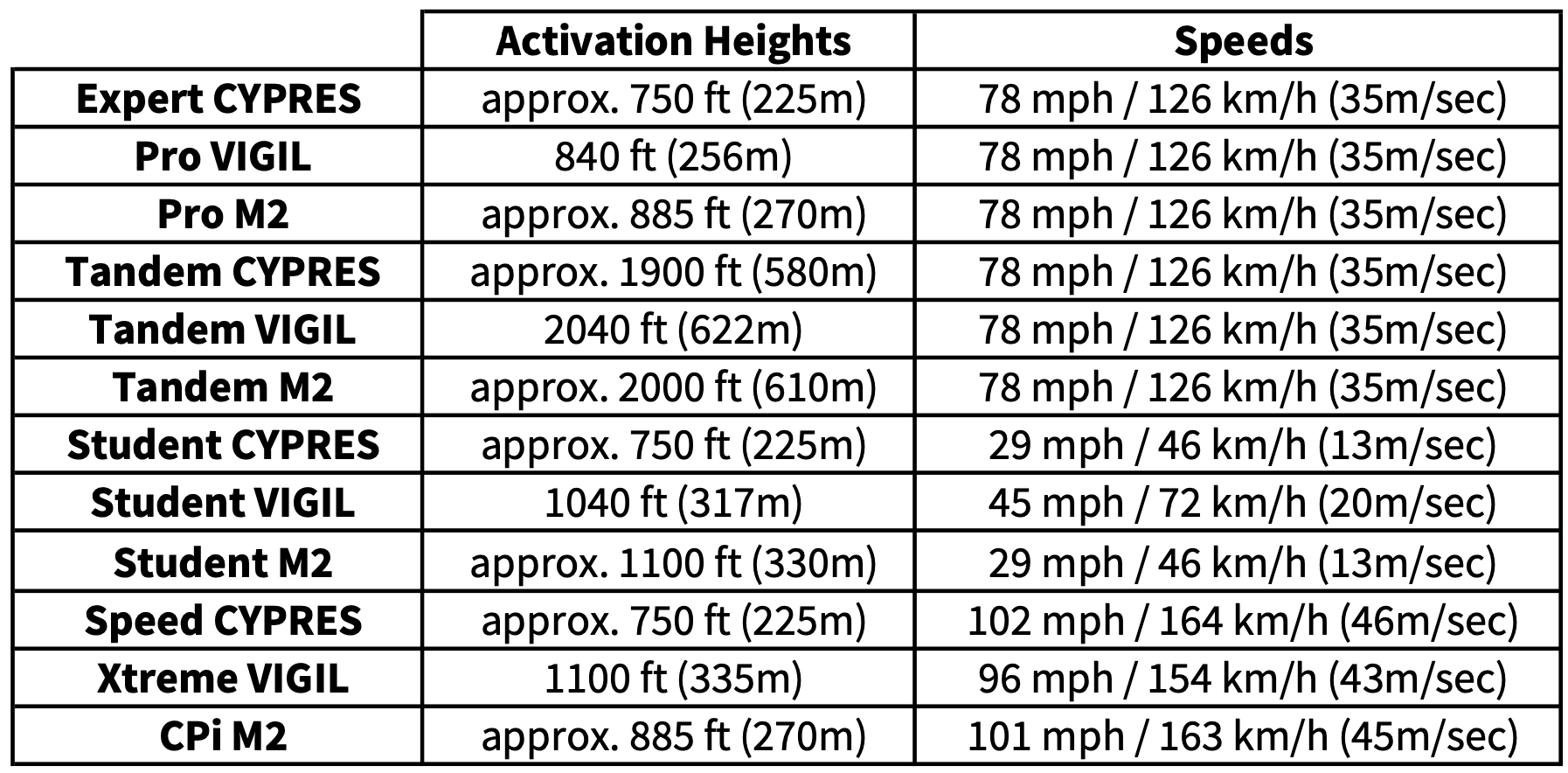
It is very important to note that these AADs will activate if the parameters are met from their preset heights down until 150ft for VIGIL, 130ft for CYPRES and 330ft for M2 above the ground (300ft for Xtreme Vigil, 330ft for a Speed CYPRES and 490ft for a CPi M2).
What is the Depression Zone?
(As explained by the manufacturer of Vigil)
It is important to understand that our AADs will activate at a higher altitude if we are not in a belly to earth position. Using the example below, is it now easy to understand that if you activate your main canopy at below 2,000ft, you put yourself at great risk of having an AAD activation.
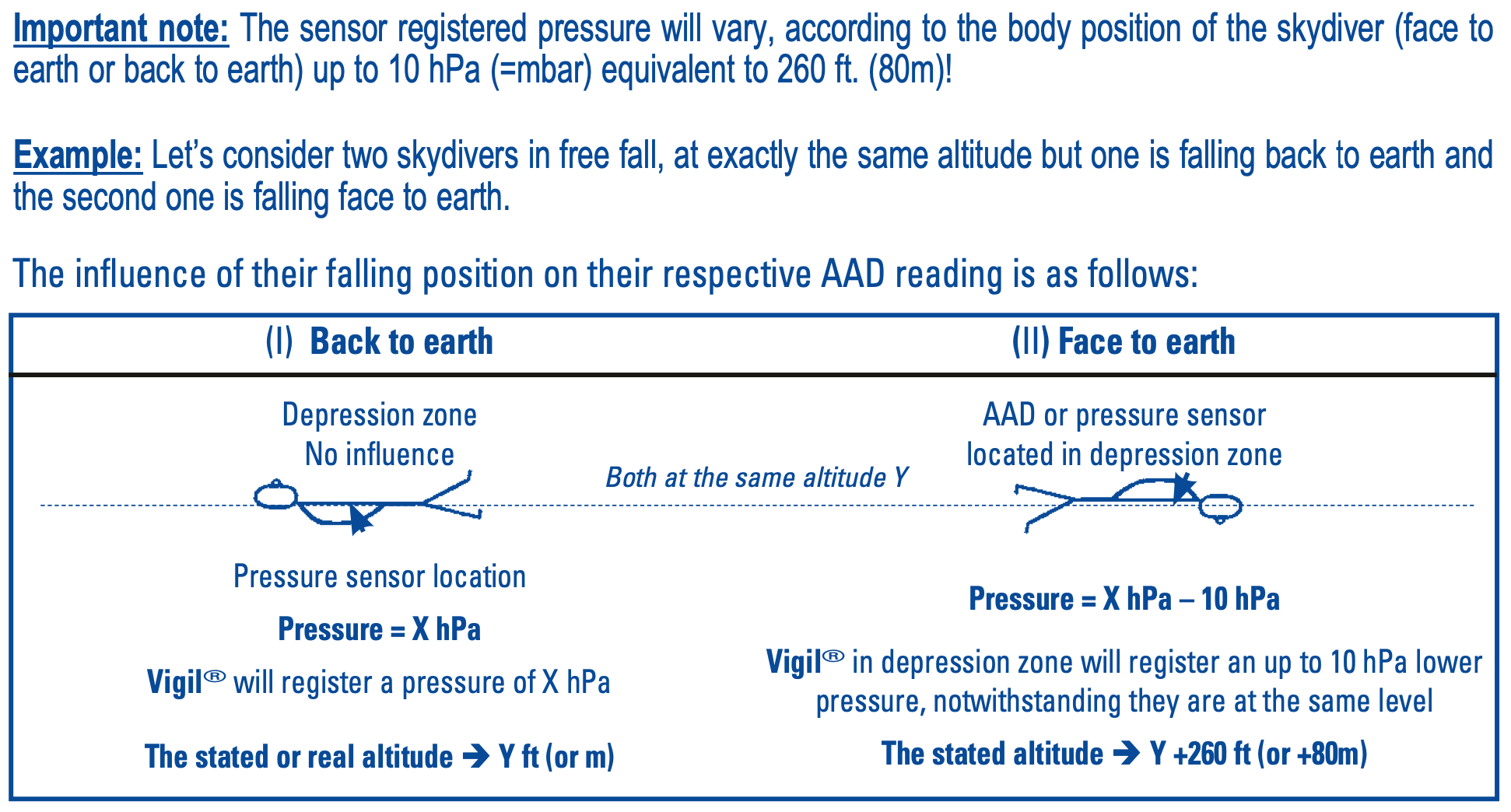
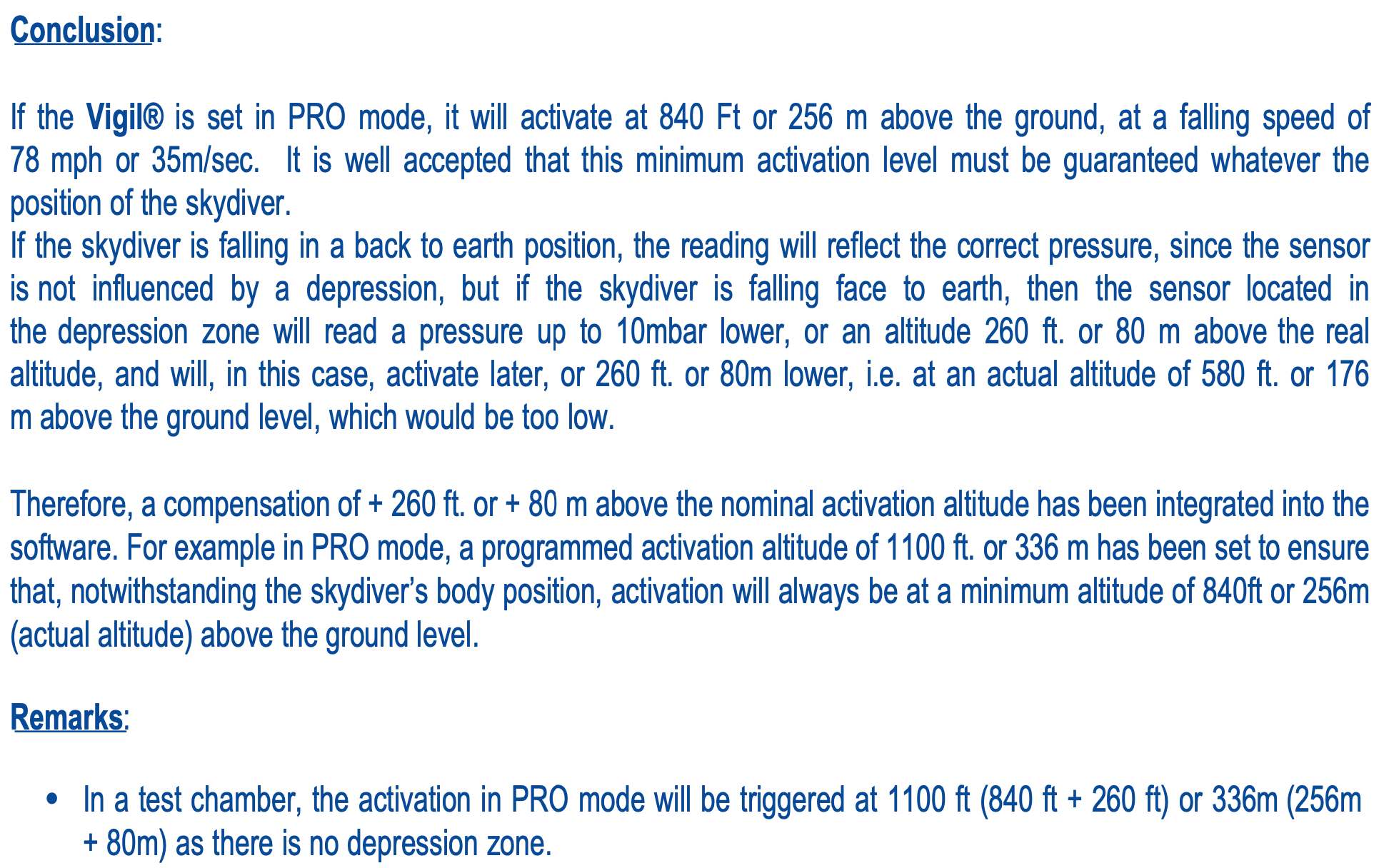
Reducing Risk
Understanding how our AAD interprets the information it is receiving will give us a greater understanding of how our AAD operates, in what situations we may be putting ourselves at risk, and what we can do to reduce this risk. For example, we could adjust our opening height to a higher altitude to allow for canopy inflation well above activation heights.
Or if high speed landings are being conducted on a high performance canopy with a high wing loading, then either:
1. Conduct a landing approach that is not as aggressive (multiple rotations)
2. If only conducting canopy piloting style landings from hop'n'pop skydives, do not turn your AAD on - This decision must involve the DZSO and CI and you must hold an APF 'E' Certificate and above.
3. Choose an AAD type that can accommodate the style of landing approach you use.
Knowledge is Power
If we arm ourselves with knowledge about the equipment we are using, we will become more aware and safer skydivers. If you do not know how your equipment operates, find out today. Ask questions, research and study. Gaining the right information may one day help you save a life, not just your own.
About the Author
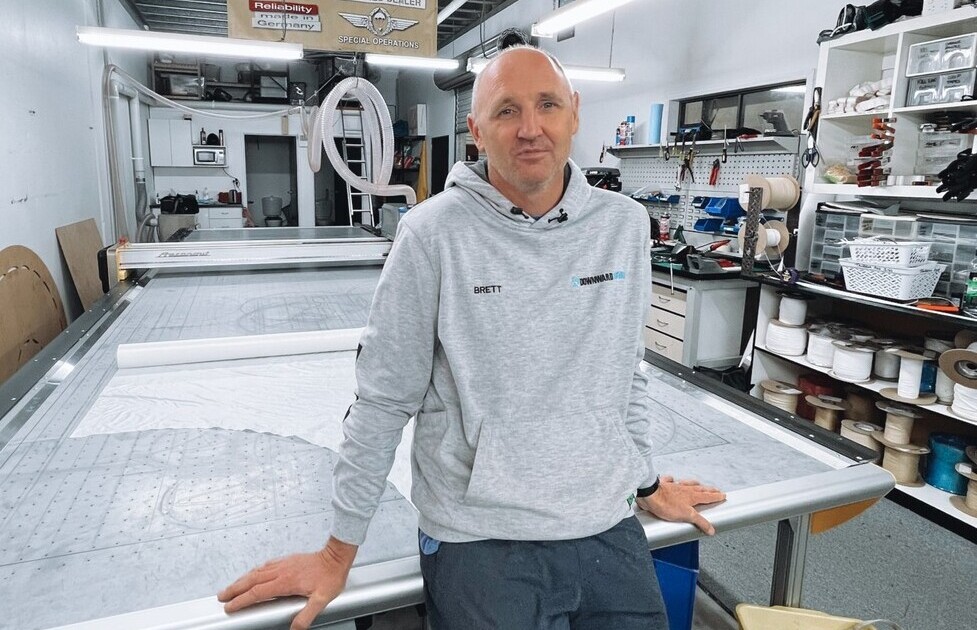
Brett Newman is the National Rigging Officer for the APF and the owner and director of Downward Trend, the one stop shop offering everything from rigging, to gear sales, to instructional videos. Brett has been skydiving for more than 25 years and is still as passionate about safety and adventure now, as he was when Downward Trend was born in 2000.
[Photo Sources: Vigil, CYPRES, M2, Downward Trend]